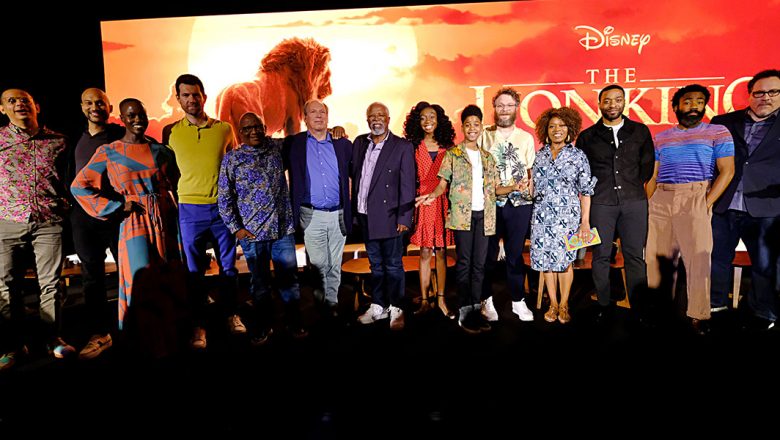By Zach Johnson
The recent Lion King global press conference in Beverly Hills began much like the movie itself, with Lebo M belting the iconic Zulu lyrics from “The Circle of Life.” Joined by soloist Clydene Jackson and a talented choir, it was a celebratory introduction fit for a king—a lion king, that is.
Moments after bringing the room to its feet with the lively performance, Lebo M reappeared onstage alongside the cast and filmmakers behind the new version of The Lion King. For the next 45 minutes, director Jon Favreau and composer Hans Zimmer—both to be inducted as Disney Legends at D23 Expo 2019—and voice talent Donald Glover (Simba), Chiwetel Ejiofor (Scar), Alfre Woodward (Sarabi), Billy Eichner (Timon), Seth Rogen (Zazu), JD McCrary (Young Simba), Shahadi Wright Joseph (Young Nala), Keegan-Michael Key (Kamari), Florence Kasumba (Shenzi), Eric Andre (Azizi), and John Kani (Rafiki) shared their memories of the original film, how it feels to be part of the all-new Lion King and other “tales.” Rounding out the voice cast is John Oliver as Zazu, with Beyoncé Knowles-Carter as Nala and James Earl Jones (also a new Disney Legend honoree) returning as Mufasa.
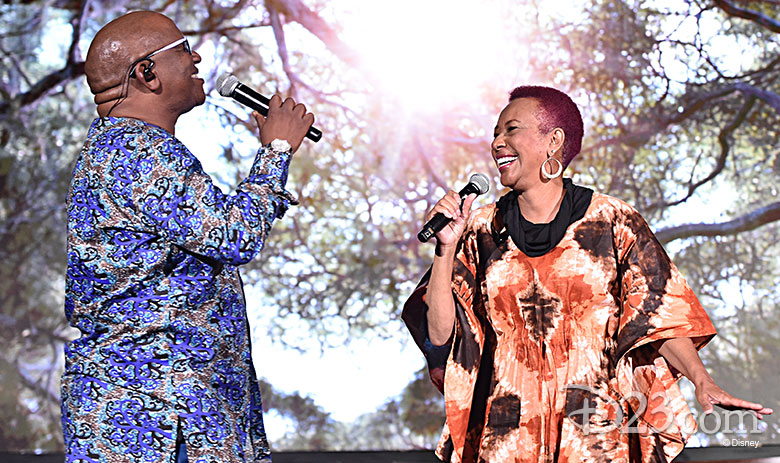
Except for one photographic shot, The Lion King was entirely computer animated. “Everything else was built from scratch by artists,” Favreau said, adding, “It’s nice to look at technology as an invitation for things to progress. I think there’s a balance between innovation and tradition.”
Before The Lion King opens in theaters July 19, enjoy nine highlights from the press conference:
1. Creating 2019’s The Lion King was a team effort. Between helming The Jungle Book and The Lion King, Favreau estimated he spent six years working “back-to-back” on two of Disney’s most iconic and beloved film properties. “I’ve been working about three years on this one, and a lot of them have been working for the same amount of time because they came in when it was pencils,” he said, tipping his hat to the actors. “It was a huge leap of faith for this fantastic cast.” Repeatedly, Favreau also emphasized the cast’s contributions. “This wasn’t something where I’d been toiling away alone; these people were all collaborators and filmmakers along with me.”
2. A virtual reality game was developed exclusively for the cast and crew. “It was so cool!” raved McCrary. “It’s like watching your favorite movie, but you’re in it! You are in the movie!” Favreau wanted to give the voice actors a sense of the world their characters would inhabit, and his strategy paid off. “Gaming and filmmaking, it’s all overlapping so much,” Favreau said. “Oftentimes when new technology comes online, it disrupts an industry. But with just a little bit of effort, we were able to build around the way filmmakers and film crews [already] work.”
“We put on the headsets, we had these controllers in our hands, and were flying! It was like we were Zazu,” McCrary said. “We saw everything! We saw the Pride Lands, we saw Pride Rock, we saw the watering hole, we saw the elephant graveyard. We saw it all, man! It was so cool! So cool!”
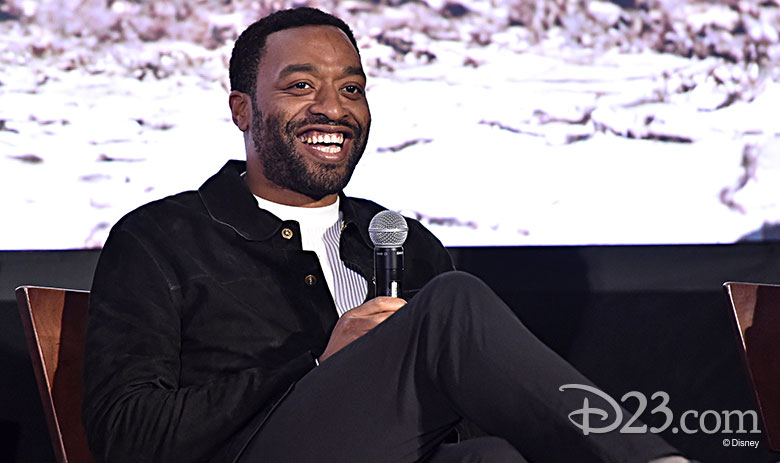
3. Many of Timon and Pumbaa’s lines were ad-libbed. “It was a lot of improvisation—right, Billy?” Rogen asked his co-star. “We were actually together every time we recorded, which is a very rare gift… I think you can really tell we’re playing off each other.” Rogen was especially impressed with how they “captured” Eichner’s comedic sensibilities in Timon, the wise-cracking meerkat. “He essentially played himself on a TV show for years and this character is more Billy than that character somehow,” he shared. “His character specifically makes me laugh so hard!”
“I wish I was as cute in real life as I am in the movie,” Eichner quipped. “The Timon they designed is so adorable, and I think the juxtaposition of my personality in that little Timon body really works.” Like Rogen, Eichner was “shocked” by how much of their riffing made the final cut. “I think it works,” he added, “and I think it feels very unique to other movies in this genre.”
4. Rafiki is a dream role for John Kani, one of South Africa’s biggest stars. “The wonderful thing about it is we’re almost the same age; we’re both over 75, so we’ve both lived it,” he said. “And I’m very grateful to you, Jon; he doesn’t look like me, but he is like me, which is fantastic.”
5. Azizi and Kamari’s codependency is no accident. “Jon has an encyclopedic knowledge of all different types of comedy. One of those pieces of knowledge is about comedic duos and the dynamic that exists between them,” Key said. “We had a very similar experience to Billy and Seth. We were allowed to walk around the room. It was as if we were being directed in a scene in a play.” Key’s co-star shared that sentiment. “I was in good hands with Jon. It was a nurturing environment—and that made it very easy, because I’m very, very sensitive,” Andre said with a laugh. All kidding aside, Key said he especially enjoyed the “refinement” process. “I’d have my headphones on and I would say to Jon, ‘Now, are we looking for Fibber McGee and Molly here or Abbott and Costello? What are you looking for?’ He’d go, ‘I’m actually looking for a little bit of Laurel and Hardy with an explosion at the end, but then make it a little ‘[Judd] Apatowian’ for me.’”
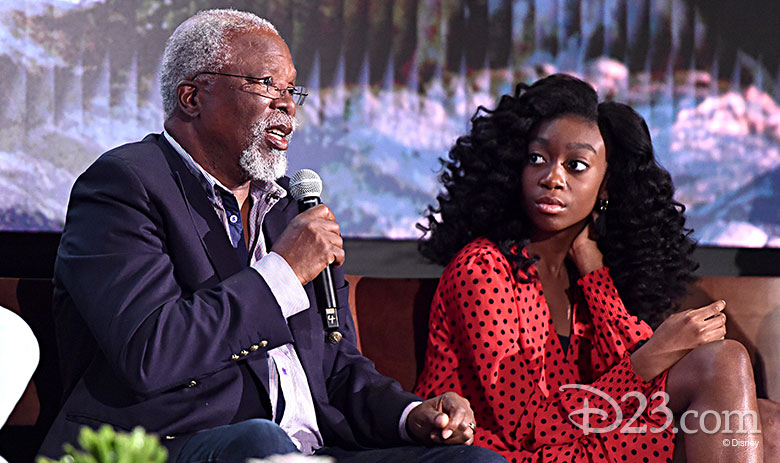
6. Two of the voice actresses originated their roles in the Broadway musical. Kasumba and Wright Joseph had performed onstage as Shenzi and Young Nala, respectively, before Favreau cast them in the film. “I was lucky that I already got to play the part in Germany for more than a year,” Kasumba said. “It’s like muscle memory, because I got to play her every day.” However, in the film, Shenzi is darker and less dimwitted. “I realized this is way more dangerous and more serious,” she recalled. Recording with Andre and McCrary helped her rediscover the character, she added. “Because everybody was very confident, we could try out things. We could walk around each other, we could scare each other, and we could scream. Be loud, be big, be small!”
“On Broadway, everything’s a little bit more structured,” Wright Joseph said, echoing her co-star’s sentiments. “You have to follow direction, which is cool. But in the new Lion King, I loved how Jon gave JD and me a bunch of freedom, especially with Pharrell Williams [who produced five songs on the soundtrack] and Hans. We also had freedom in the booth. He was like, ‘You can riff or do whatever. Just make it fun!’ I wasn’t used to that, but it was amazing.”

7. Glover’s son might be a bigger Lion King fan than the actor himself. Before the world premiere at L.A.’s Dolby Theatre, Glover “didn’t tell him anything” about his involvement. “It’s his favorite movie, so I was like, ‘I’ll just wait until he gets there.’ Somehow he found out about it, but he still didn’t know I was in it. He was just like, ‘Oh, the one with Beyoncé?’” Eventually, he laughed, it clicked: “During the movie he was like, ‘Oh! Dad’s in it, too? This is great! Bonus!’”
8. The Lion King proudly celebrates its fierce female characters in the pride. “It is called The Lion King, but everyone knows the lionesses are actually the rulers, the protectors, the nurturers, and the hunters of the pride,” Woodard clarified. “Jon gave us the space to be that.”
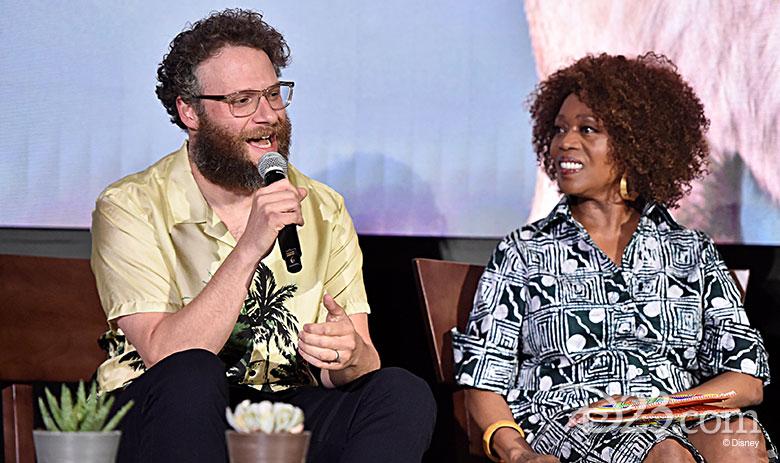
9. One of The Lion King’s funniest moments references another iconic film. “There’s a gag that references another Disney property. They do that in the stage show; they threw in a joke about Frozen that must have happened after Frozen came on Broadway,” said Favreau, careful not to spoil the joke. “We doff the cap to another live-action adaptation of a Disney animated classic.”


